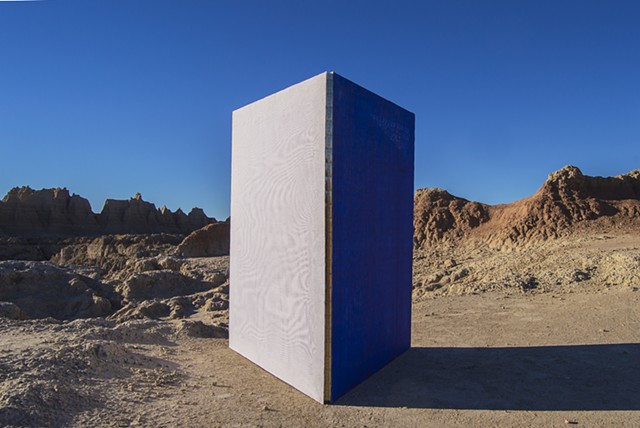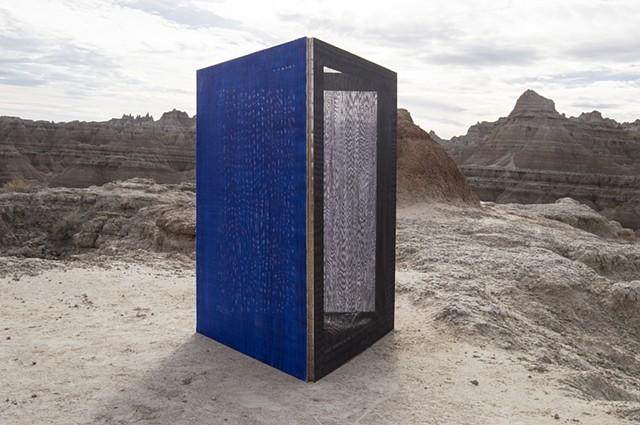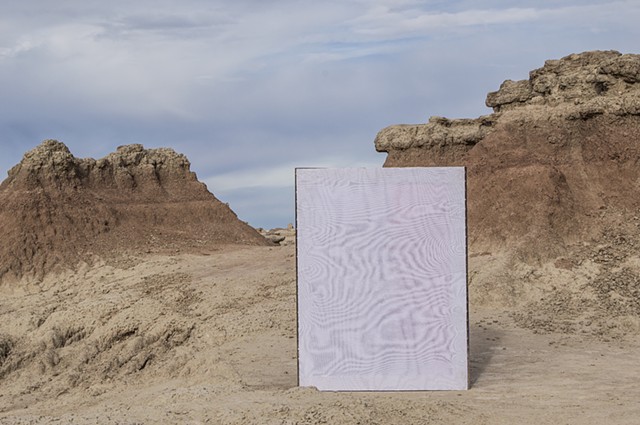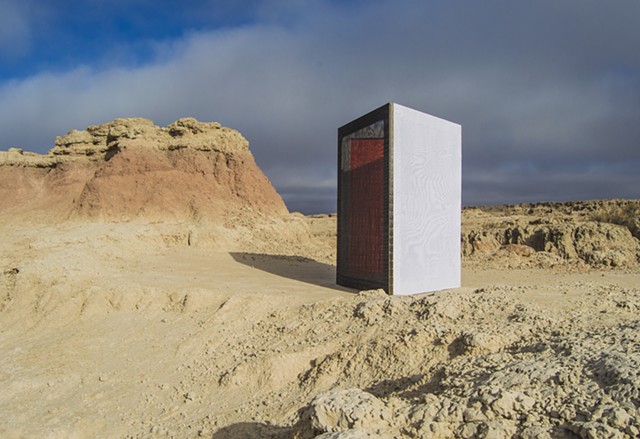Mirroring
site-specific installation at Badlands National Park, South Dakota, USA
excerpt from an interview with OtherPeople'sPixels:
"OPP: Aside from having to navigate the physical conditions of the landscape, how was your work (at Badlands National Park) informed by your research into the region?
GH: I spent time researching the visual aesthetic traditions of Lakota culture. The challenge was then creating a bridge between this “field study” research and the physical work I created. Color and geometry were the major aspects of my research. Specifically, I was reading about Lakota star knowledge/astronomy/stellar theology and its interdependence with the landscape. There is a beautifully poetic yet literal concept called mirroring. The earth and the stars “are the same, because what is on the earth is in the stars, and what is in the stars is on the earth” (quoted from Mr. Stanley Looking Horse, father of the Keeper of the original Sacred Pipe, in Lakota Star Knowledge). One example of this is how the earth map and star map are interdependent on one another; this is described in an abstract, geometric drawing. The visual description, which has been recorded in star maps, has an inverted triangle above a reflected triangle, and these triangles meet at their apexes. They are mirrored. The inverted triangle on top symbolizes the sky, or a star, and the drawings of it look like a pointed cone that channels light. The mirrored triangular cone on the bottom is the same but inverted. This component symbolizes the tipi (which is loaded with geometric symbolism) and earth sites. Thus, the combination of the two triangle cones is called Kapemni in Lakota, or twisting.
One of the sculptural works I created drew from this knowledge and employment of geometry to channel light from the sky. I created a triangular, three-sided form as a conduit for the sunlight and a place for the light from the sky to integrate with the ground and rocks and landscape."
full interview can be found here:
blog.otherpeoplespixels.com/otherpeople…




